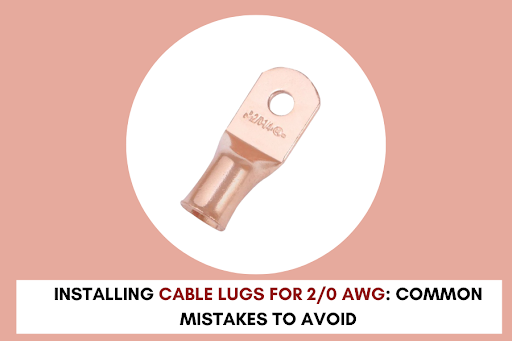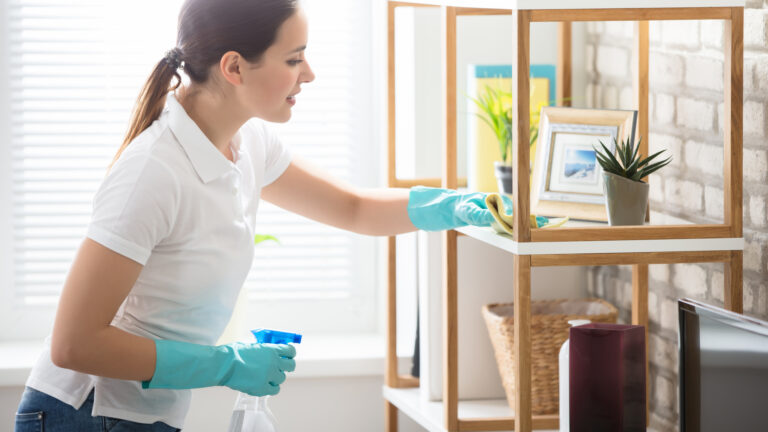If you’re working with heavy-duty cable especially 2/0 AWG you already know this isn’t your average wire. These thick cables are used to move serious current in setups like off-grid battery banks, RVs, marine systems, and industrial equipment.
But here’s the thing: the cable is only as good as the lug that connects it.
And more importantly, the connection is only as good as the installation.
At Selterm, we’ve seen a lot of mistakes when people install 2 0 AWG cable lugs especially among first-time DIYers or even pros rushing the job. A small slip can lead to poor conductivity, overheating, or even a system failure.
Let’s talk about the real-world mistakes to watch out for and how to avoid them.
Common Mistakes To Avoid When Installing 2/0 AWG Cable Lugs
Here’s how to get it right and avoid the errors that lead to loose connections, overheating, or system failure.
1. Choosing The Wrong Lug Size
It sounds basic, but it’s surprisingly common. Not all cable lugs for 2 0 AWG are made equal. You need to match two things:
- The cable size: 2/0 AWG
- The stud hole size: 1/4″, 5/16″, or 3/8″ depending on your terminal
If either of these is off, you’ll either have a loose fit (bad for conductivity) or a connection that just won’t work.
Tip: Selterm’s 2/0 lugs are clearly labeled and sized to match most heavy-duty terminals. Always double-check the spec before you crimp.
2. Stripping Too Much Or Too Little Wire
Stripping wire sounds easy… until you do it on 2/0 AWG cable. You need just enough exposed copper to fully insert into the lug barrel, without leaving any strands outside or worse, short of the end.
If you strip too much, you’ll have exposed copper hanging out, which can oxidize or short out. If you strip too little, the crimp won’t hold all the strands, and you’ll reduce the contact area.
Solution: Use a heavy-duty cable stripper and measure the strip length to match the barrel depth of your lug. You want a snug, full fit.
3. Using The Wrong Crimp Tool
This one’s a biggie. A poor crimp is one of the most common and most dangerous mistakes we see with 2/0 AWG cable lugs.
Here’s what NOT to use:
- Pliers (can’t apply enough force)
- Hammer-style crimpers (inconsistent)
- Undersized hand crimpers (won’t apply enough force)
What you DO want:
- A hydraulic crimper or a hex die crimper rated for 2/0 AWG
- A full, clean crimp that compresses the entire barrel
- If your lug has an inspection window, the copper should be visible through it
A good crimp = low resistance + long life.
4. Skipping Heat Shrink Or Sealing The Connection Poorly
After you crimp, your connection still needs protection especially in outdoor or high-vibration setups like RVs, boats, or solar systems.
Many skip this step or use basic electrical tape, which doesn’t hold up over time. The result? Corrosion, moisture intrusion, and breakdown of the wire insulation.
Fix it right: Use dual wall heat shrink tubing with an adhesive lining. It creates a watertight seal and adds mechanical strain relief.
Pro tip: Slide your tubing on before crimping, then apply heat evenly with a heat gun until the adhesive melts and seals the joint.
5. Overlooking Vibration And Flex Points
In mobile environments (like RVs, trucks, or boats), the wiring moves. If your cable is under tension or flexes near the lug, you risk long-term fatigue and failure.
Avoid this by:
- Leaving a bit of slack in the cable near the connection
- Supporting the wire with clamps or mounts
- Using strain reliefs when possible
Protecting the joint from constant movement is just as important as making the connection itself.
Bonus Tips For Working With 2/0 Lugs
- Pre-check your lug fit: Slide the wire in before stripping to confirm compatibility
- Label your wires: Use colored tubing or tags so you know what connects where especially in big systems
- Clean surfaces before connecting: If attaching to a battery or busbar, make sure contact points are clean and free of oxidation
- Double-check polarity: Especially critical in solar and battery installs where reverse polarity can damage gear
Final Thoughts: Big Cable, Bigger Responsibility
Working with 2/0 wire means you’re dealing with serious power. Whether you’re setting up a solar battery bank, wiring an inverter, or upgrading your RV system, your lugs are critical.
Selterm’s cable lugs for 2 0 AWG are built for high-conductivity, high-load systems, and they’re made to last. But even the best gear can’t save a bad install.
Avoid the common mistakes. Take your time. Crimp it right. Seal it well. And your connection will be just as strong as the cable it’s on.




